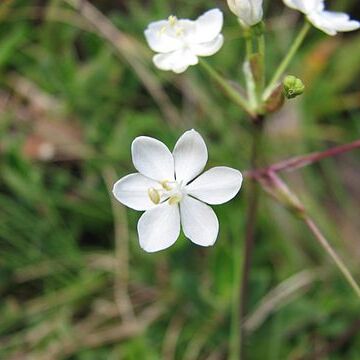Loosely tufted, ±glabrous herb. Rhizome wiry, sparsely branched, to 10 cm long. Leaves linear to falcate, 5-18 cm long, 2-7 mm wide. Scape exceeding leaves, 1-2 mm diam., leafless or with 1 or 2 reduced leaves. Rhipidia 3 or 4, each with 3-6 flowers on pedicels 2-3.5 cm long. Spathes lanceolate, 8-18 mm long; bracteoles 4-8 mm long. Sepals and petals cream-white, ovate, c. 5 mm long, the sepals slightly narrower, with fewer veins. Filaments very shortly connate; anthers c. 2 mm long; connective large, triangular. Ovary globose. Capsule globose-trigonous, 3-5 mm diam., brown; valves recurved at dehiscence. Seeds globose, c. 1 mm diam., dark brown; funicle persistent.

